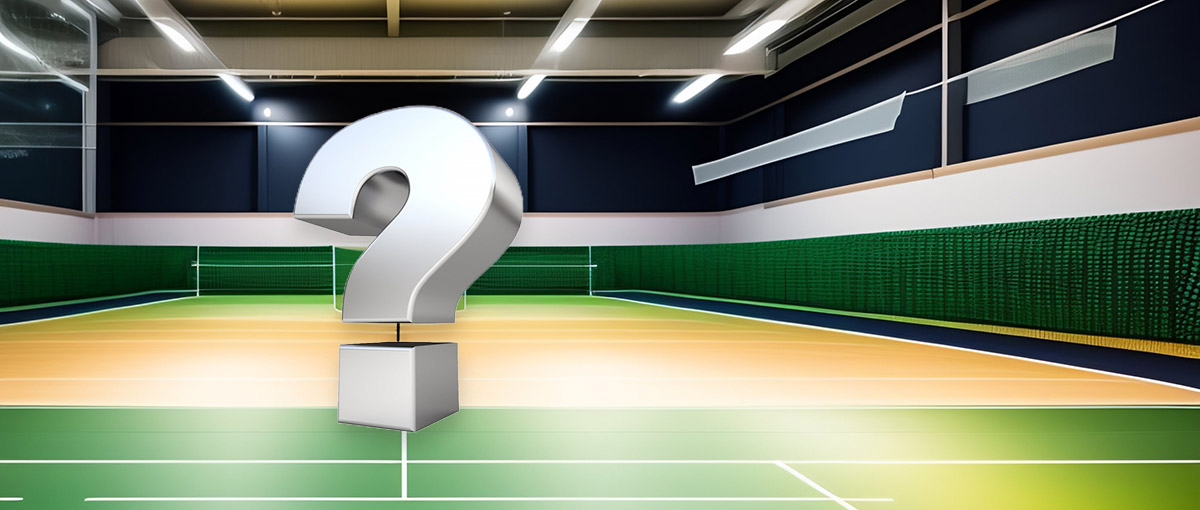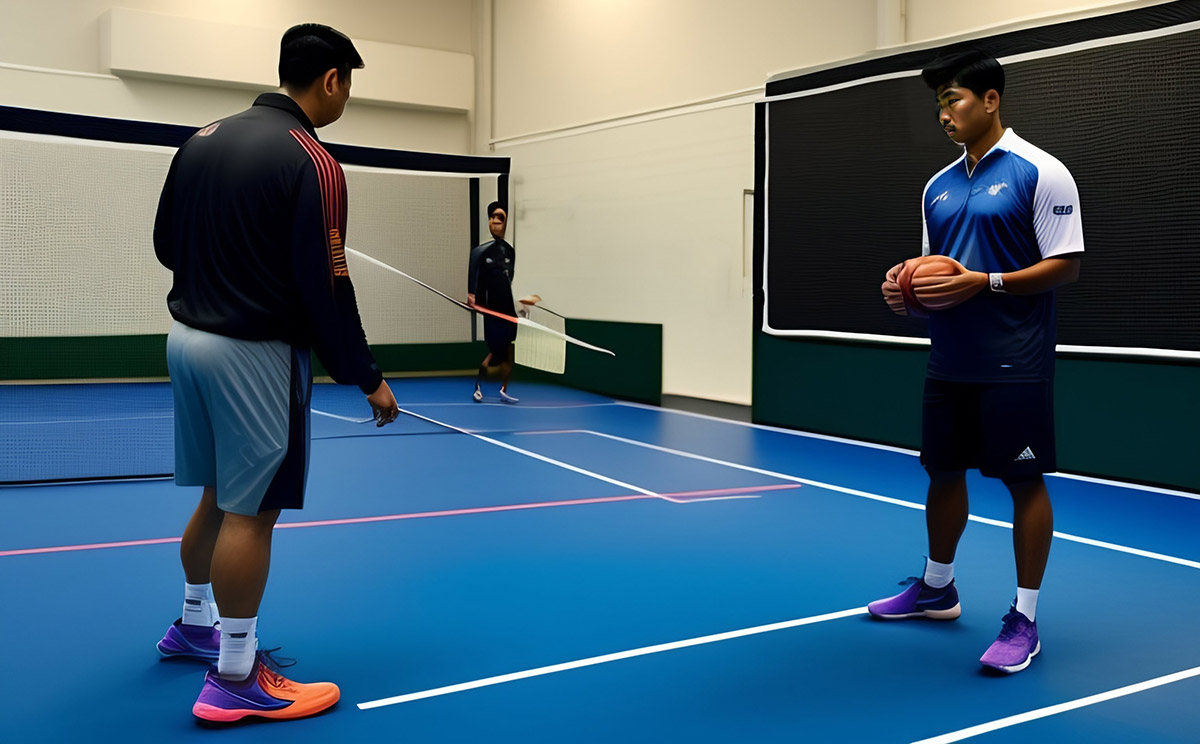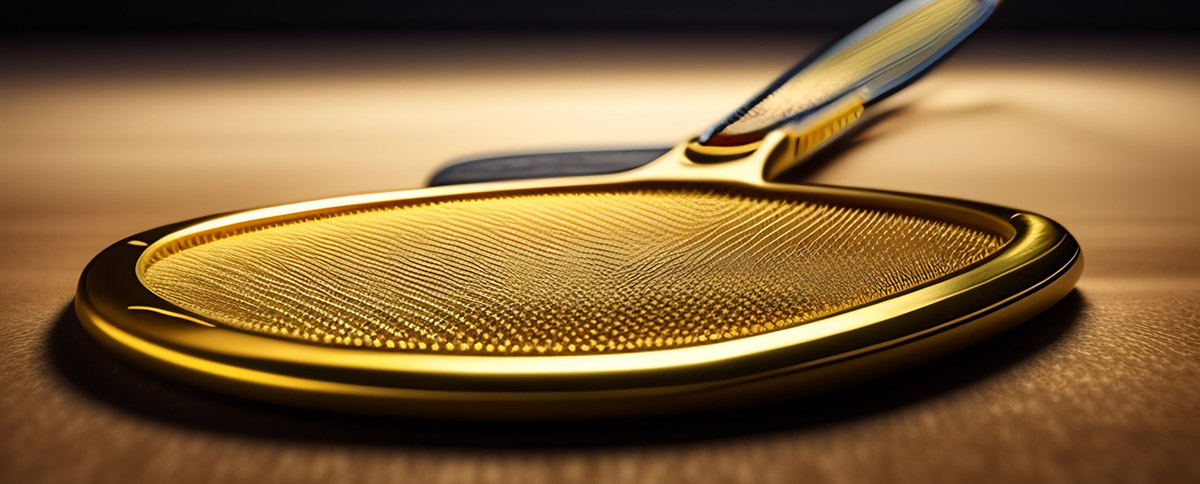Badminton is a globally popular sport played by millions of individuals. Many people feel badminton is simple to play because it is commonly viewed as a backyard pastime. This article will talk about the sport of badminton, including its rules, history, and some of the common myths about it.
History of Badminton
Badminton started in India in the middle of the 1800s as a way for British officers to pass the time. In 1877, the game's first official rules were written down in England, where it quickly became popular and spread. Early badminton was played using a shuttlecock composed of feathers, commonly known as a "birdie," and wooden rackets. Modern rackets composed of graphite or carbon fibre were introduced as the sport progressed. Currently, the badminton world federation is the international governing body for the sport of badminton and is practised by millions of people worldwide.
Rules of Badminton
Badminton is played on a court that is separated by a net. In singles and doubles, the goal is to hit the shuttlecock over the net and into the other team's court. When the shuttlecock lands on the opponent's court, points are awarded, and the game is won by the first player or team to reach 21 points with a two-point advantage.In contrast to other racquet games such as tennis and table tennis, the shuttlecock can be hit with any portion of the racket in badminton. The game involves a great level of agility, speed, and coordination, as players must move swiftly across the badminton court and respond rapidly to the unpredictability of the shuttlecock.
Myth #1: Badminton is a simple backyard game that requires no skill.
Despite common assumptions, badminton is not a simple sport to master. To achieve mastery, players must develop a variety of talents, including footwork, racquet skills, and strategy.
Footwork is essential in badminton, as players must be able to move rapidly and change direction in an instant. Excellent footwork allows players to be in the optimal position to strike the shuttlecock and to effectively cover the court.
Many people believe that badminton is a simple backyard game played for enjoyment, with no element of competitiveness or expertise. Yet, this is not even close to the truth.
Badminton is an Olympic sport, and to compete at the highest level, one must have exceptional skill, athleticism, and strategy.
Professional badminton players train for hours every day, focusing on footwork, agility, strength, and speed development. Also, they hone their strokes and tactical abilities to outmanoeuvre their opponents on the court. In addition, badminton takes considerable mental strength and concentration. Players must maintain composure under pressure and be able to make split-second decisions in response to their opponent's actions.

Myth #2: All badminton players use identical rackets.
A widespread misconception about badminton is that most players use the same racquet in tournaments. This is far from reality, as there are numerous sorts of badminton rackets, each with its own distinctive qualities.
There are a variety of racket forms, sizes, and materials. Some badminton rackets are built for power generation, while others are built for control. The racket's weight and balance can also change based on the player's preferences and playing style.
The shaft's rigidity is one of the most significant things to consider when selecting a badminton racket. In general, rackets with stiffer shafts are more powerful, whereas rackets with more flexible shafts offer greater control. String tension is an additional crucial component to consider. The tension of the strings can impact the racket's power, control, and feel.
Myth #3- You need a coach to improve your badminton performance.
Many novices believe that having a badminton coach is essential for skill development. While having a coach can provide helpful input and direction, it is not necessary to excel in a sport.
There are several internet tools, like instructional videos and online courses, that can assist players in improving their technique and strategy in this technological age. These websites can provide step-by-step instructions on how to execute various badminton shots, as well as advice on developing a training plan and setting attainable goals.
In addition, players can gain knowledge by utilizing badminton trackers, observing professional matches, and researching the strategies of the best players. By analyzing their footwork, shot selection, and general strategy, players can deepen their grasp of the game and enhance their own abilities.
Self-practice is also a great method of badminton improvement. By concentrating on specific areas of deficiency, like footwork, timing, or shot accuracy, players can gradually improve their abilities via repetition and careful practice.
Having a coach can still be advantageous for those who are committed to developing their skills. A coach is able to provide customized feedback and highlight areas of weakness that a player may not be aware of. In addition, they can design an organized training program and provide advice on mental preparation, proper technique and game strategy.

Myth #4: Badminton players utilise only their arms.
Another prevalent misconception about badminton is that players only use their arms. Badminton actually demands the use of the entire body, from the legs and core to the arms and wrists.Footwork is a vital part of badminton, as players must move swiftly and efficiently around the court to reach the shuttlecock. This demands robust leg muscles, excellent balance, and dexterity.
Also, core muscles are very important in badminton because they help players stay balanced and give their shots power. A strong core can also aid in injury prevention and enhance overall performance on the court.
In order to strike the shuttlecock, players utilise a mix of arm and wrist motions. The arm gives strength and direction for the shot, whilst the wrist provides the finesse and control necessary for accurate shots.
When hitting some strokes, players must also utilise their non-dominant arm to maintain balance and provide additional support. This involves both arm and hand coordination and control.
Myth #5: You must be tall to play badminton well.
One of the most pervasive misconceptions about badminton is that one must be tall in order to excel at the sport. Despite the fact that height can be advantageous in certain parts of the game, it is not a prerequisite for success.Many of the best badminton players in the world are not exceptionally tall. The athletes' Lin Dan, Lee Chong Wei, and Taufik Hidayat are all under 6ft in height, yet they have achieved remarkable success in their respective sports.
One of the primary reasons why height is not required for badminton is that the sport is not solely about strength. Badminton needs agility, speed, and precision in addition to height, which helps with strong badminton smash and overhead strokes.
Shorter players typically have an edge in terms of speed and agility, as they can move and change direction on the court more quickly. They may also find certain shots, like as drop shots and net shots, which involve finesse and accuracy rather than strength, easier.
In addition, badminton is a sport that rewards players who can predict their opponents' shots and read their movements. This takes mental concentration, quick reflexes, and tactical skills in addition to physical height.

Myth #6: Badminton requires pricey equipment
Another prevalent misconception about badminton is that expensive equipment is required to play. While it is true that high-end equipment might bring certain benefits, it is feasible to enjoy badminton without spending a fortune.The racket is the most important component of badminton equipment, and there are numerous variations available at various price points. Rackets for beginners can be purchased for as little as INR 1000 to 2000, although rackets for advanced players can cost several thousand rupees. But, for the majority of casual players, a racket priced between INR 1000 and 2000 will suffice.
Similarly, while badminton shoes can provide additional traction and support on the court, it is not required to purchase costly speciality footwear. Comfortable, lightweight athletic shoes with good traction and non-marking can serve casual players just as well.
Additional equipment, like the shuttle, is also available at a range of prices. In spite of the fact that more expensive shuttlecocks may offer superior durability and flying performance, inexpensive alternatives can still be completely suitable for recreational use.
Ultimately, although investing in premium equipment can bring certain benefits, it is not required to play badminton. Anyone may begin playing badminton and enjoying the sport with a mid-range racket or cheaper racket, comfortable non-marking sports footwear, and a few nylon shuttlecocks.

Myth #7: Doubles are easier than singles
One of the most pervasive misconceptions about badminton is that doubles are easier than singles. There are distinctions between the two formats, but neither can be deemed "easier" than the other.In doubles, players work with a partner to cover the court and coordinate shots and tactics. This can be advantageous in certain circumstances, such as when playing badminton against formidable opponents who can execute powerful shots. In addition, doubles frequently contain faster-paced rallies and challenge players to respond swiftly to the shots of their opponents.
Yet, playing doubles involves a high degree of coordination and communication between teammates, which can be difficult for certain players. Players must have the ability to anticipate their partner's actions and rapidly modify their court positioning.
Otherwise, you hear a Boom sound and a broken racket in the hands of the badminton player. And if this was purchased online, then the story starts, we just hit the shuttle, and within 2-3 shots, the racket is gone, so we need a refund/replacement. Are you one of these "Pade Likhe Chor" buyers, as e-commerce companies refer to them? Because how can they be faithful to the game if they are not faithful to themselves?
Singles, on the other hand, require players to cover the entire court by themselves, which may be physically and mentally taxing. Players must be able to move swiftly and efficiently around the court and perform a variety of shots proficiently. In addition, singles frequently necessitate greater patience and strategic thought, as players must be able to wear down opponents over the course of longer rallies.
Both singles and doubles involve a high degree of ability and strategy, and neither style can be called "less difficult" than the other. Players may have preferences based on their individual strengths and playing styles, but ultimately, both forms present unique challenges and rewards.
Myth #8: Recent the import date of Graphite rackets and strings, the greater their longevity.
It is a widespread fallacy that the graphite substance used in badminton racquets becomes obsolete or less effective over time. Due to its durability, strength, and lightweight, graphite is utilised in a variety of high-performance rackets.
While it is true that badminton racket can contain new technologies and design characteristics, this does not necessarily imply that previous rackets are inferior. Some older rackets constructed from graphite and other high-quality materials are still quite effective and may be tailored to a player's preferences and demands.
The age/import date of a racquet is not the only determinant of its performance or durability. Regardless of a racket's age, proper care and maintenance can aid in extending its useful life and performance.
The age of a racket is only one factor to consider; rather than focusing on its age or import date, players should select a racket that matches their playing style and preferences.
Similarly, the age of the badminton strings is not the sole element that influences their performance or durability. Additional factors such as string tension, string type, and the playing style of the musician can also affect the durability and performance of the string. Strings have a four-year shelf life, meaning unopened packs of strings are as fresh as they were four years ago.
Myth #9: Greater tension equals more Power
In badminton, it is commonly believed that more string tension automatically results in more power. While it is true that string tension can affect the performance of a badminton racket, more tension does not necessarily translate to more power.Several characteristics of a racket's performance are affected by string tension, including its power, control, and durability. Greater tension can increase precision and control, but it can also limit the power and increase the likelihood of string breakage. A decrease in tension might improve power, but it can also compromise precision and control.
The appropriate string tension for a musician is determined by his or her playing style and personal preferences. Some may like lower tension for increased power and a larger sweet spot.
It is also crucial to note that regardless of tension, the type of string used can affect the performance of a racket. Certain strings are meant to deliver greater power, while others offer greater control or longevity.
Power in badminton is not necessarily proportional to string tension. Pls. also remember higher the tension, the higher the chances of racket breakage.
Myth #10: Unstrung racket is an unfinished racket, and the best alternative is to get a company-strung racket.
Many people believe that obtaining a pre-strung badminton racket from a respected provider is the best option when purchasing a racket. They presume that the firm has already selected the suitable strings and tension for the racket and that the pre-strung racket is immediately ready for use.Yet, this is only partially true. Pre-strung badminton racquets are convenient, but they may not be the ideal solution for everyone. In fact, the string used in the renowned company's strung rackets is so inexpensive that your pack of chips is more expensive. A racket that is unstrung permits the player to modify the string tension and kind of string to his or her liking. This is especially advantageous for players that take their game seriously and wish to optimise their equipment for their playing style. By changing the stringing, the player's performance on the court can be enhanced.
In conclusion, badminton is a difficult and thrilling sport that demands talent, strategy, and physical fitness. By dispelling these ten prevalent misconceptions, players can gain a deeper grasp of the game and realise their full potential. Remember that badminton is about more than just winning; it is also about having fun, making social connections, and gaining mental and physical discipline. So stop criticizing, and utilize the resources you get.
Your email address cannot be published. Required fields are marked*

 My Account
My Account Track Order
Track Order Sports Guide
Sports Guide
